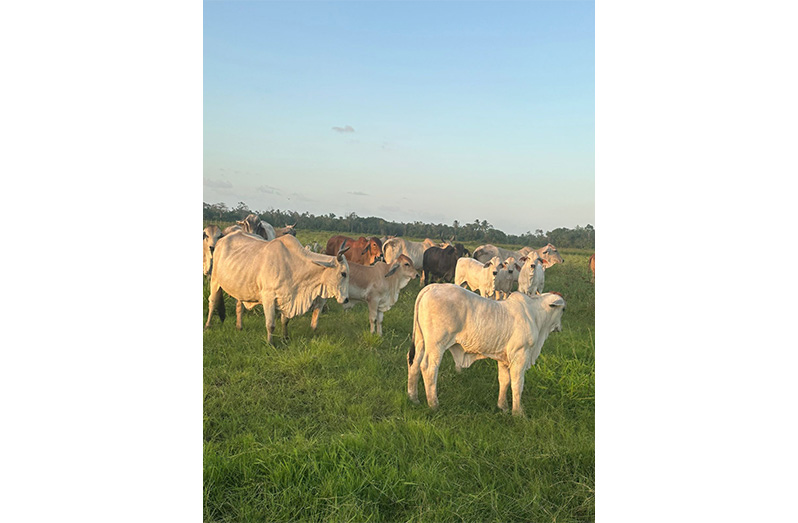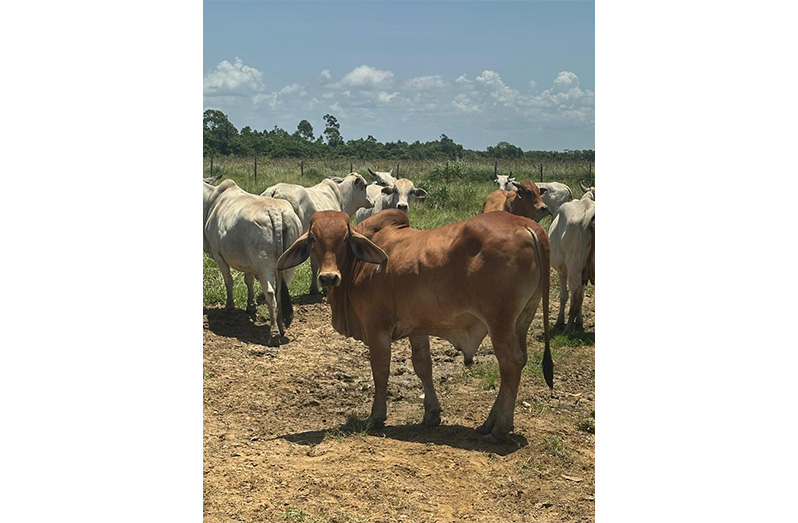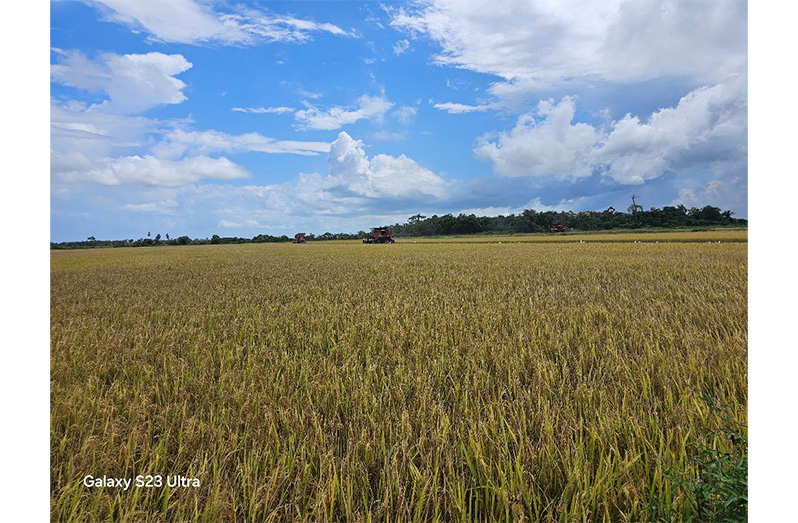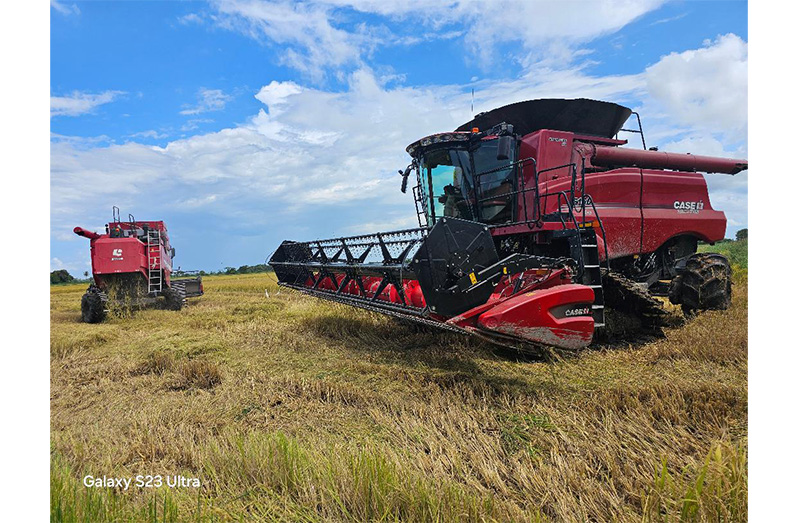ON the Mahaica-Berbice coast, the name Suenarine has long been linked to farming. For generations, the family has planted rice and raised cattle, their reputation built on hard work, careful management, and an unshakable love for the land.
Today, 34-year-old Vayrendra Suenarine is carrying that tradition forward — but with a twist. Like his father and foreparents before him, he tends rice and cattle. But unlike in years past, when rice was the main breadwinner and cattle were more of a family passion, Vayrendra now sees both sides of the enterprise as vital.
And with Guyana’s oil economy transforming the country, he believes the time has come for farmers like him to think bigger: to diversify, modernise, and prepare to meet rising demand for food — not only at home but across the Caribbean.

Growing Up in the Fields and Pastures
Vayrendra’s earliest memories are of being by his father’s side, helping to rear cattle and planting rice whenever a crop was due. Farming, he says, wasn’t something you chose; it was part of who you were.
“Growing up, I was always in the fields or with the cows. That was my world,” he recalled. “It’s what shaped me.”
Back then, the family’s 35,000 to 40,000 acres of rice fields were the main source of income. Cattle rearing continued because the Suenarines loved animals, and because it was a tradition passed down from one generation to the next. The cows were tended faithfully, but they weren’t seen as a big business venture.

That view began to shift when Guyana discovered oil. As the economy grew, so too did the demand for food. Beef and milk consumption began to climb, and suddenly, what had been a sideline started to look like an opportunity.
Taking Cattle More Seriously
Today, the Suenarine ranch is home to about 2,000 Brahman cattle, carefully bred and managed. Unlike in the past, the focus is no longer just on keeping cattle as a tradition. It is now a structured business designed to produce high-quality breeding stock for farmers across Guyana.
In fact, most cattle farmers in the country have at least one animal linked to the Suenarines’ herd. It all started in 2010, when the Guyana Livestock Development Authority (GLDA) gifted the family their first improved bull. That bull produced offspring that set a new standard for the herd. Over time, Vayrendra and his father hand-selected the best heifers, imported another bull with superior genetics, and, more recently, benefitted from two additional bulls provided by GLDA.

“The support has been constant,” Vayrendra explained. “Whenever we need advice, GLDA is just a phone call away. Dr Waldron, Chief Executive Officer, GLDA, and its extension staff headed by Dr Joel Dilchand, Senior Veterinarian and Region Five Coordinator, are always checking in, helping us with record-keeping and management. That kind of support makes all the difference.”
Tradition Meets Technology
Vayrendra still looks to his father for guidance. He has deep respect for the traditional knowledge passed down through the generations — the rhythms of the land, the instincts that can’t be taught. But he also knows the world has changed.
“We can’t just do things the old way anymore,” he said. “With climate change, with new markets, we have to embrace technology. That means better genetics for both crops and cattle, and systems that are sustainable, cost-effective, and environmentally friendly.”

For the Suenarines, this has meant diversifying rice varieties too. They continue to grow local strains developed by the Guyana Rice Development Board (GRDB), but they also plant other varieties that resist the dreaded red rice. These allow them to manage fields more efficiently, spraying a targeted herbicide that clears out weeds while protecting the crop and environment.
The results aren’t always predictable — yields range from 30 to 40 bags per acre depending on the weather — but the family adapts with each crop. “Rice is never the same from one season to the next,” Vayrendra admitted with a smile. “But that’s farming. One crop will be good, the next one not so good. You just keep moving forward.”

Records That Tell a Story
One of the things Vayrendra is most passionate about is record-keeping. To him, good records are more than paperwork — they’re a way of ensuring traceability and accountability.
“In cattle especially, when you’re selling breeding stock, people need to know the history of the animal: its genetics, when it was born, its parents. That’s how you build trust,” he explained.
The family maintains strict logs of every calf born, every cow sold, and every breeding decision made. GLDA extension officers also check in regularly — sometimes every three days — to register new calves. For Vayrendra, this process isn’t a burden; it’s a backbone.
“Records give you confidence in your system,” he said. “It helps you improve year after year.”

Public and Private, Hand in Hand
Vayrendra is also a believer in partnership. He sees the relationship between farmers and government institutions — through agencies like GLDA and GRDB — as essential for the future of agriculture.
“Farmers bring the land and the labour, but the agencies bring research, improved genetics, and technical support,” he explained. “When we work together, that’s when the industry grows.”
Farming with Heart and Vision
Despite the scale of the operation, farming still feels deeply personal for Vayrendra. He admits that some days the numbers don’t add up — cattle income often goes straight to paying workers, with little left over. But that doesn’t dampen his pride.

“Sometimes I go to the ranch just to walk among the cows. It makes me feel good, proud of what we’ve built,” he said warmly.
For him, farming is not just about making a living. It is about heritage, community, and the promise of a future where agriculture keeps pace with national growth.
“Oil is changing Guyana, yes, but agriculture must stay strong,” he said. “People will always need rice, beef, milk. And if we do it right — with good genetics, technology, and support — we can feed not just Guyana, but the whole region.”
As he looks out over his fields and pastures, Vayrendra Suenarine sees more than crops and cattle. He sees resilience. He sees opportunity. And most of all, he sees a family tradition, renewed for a new generation.




.jpg)









